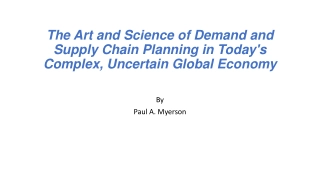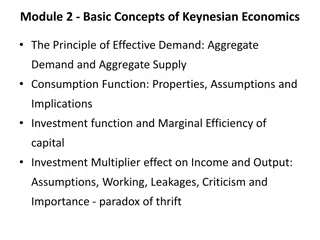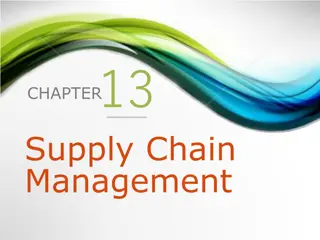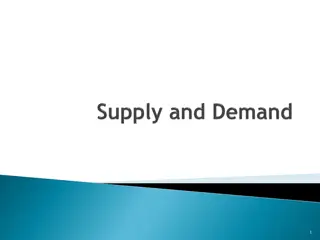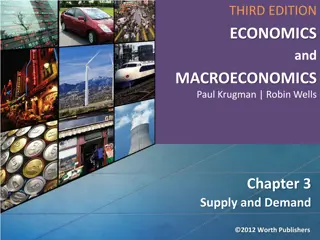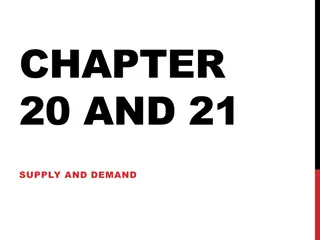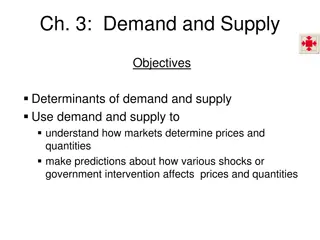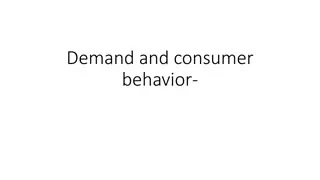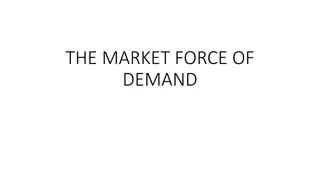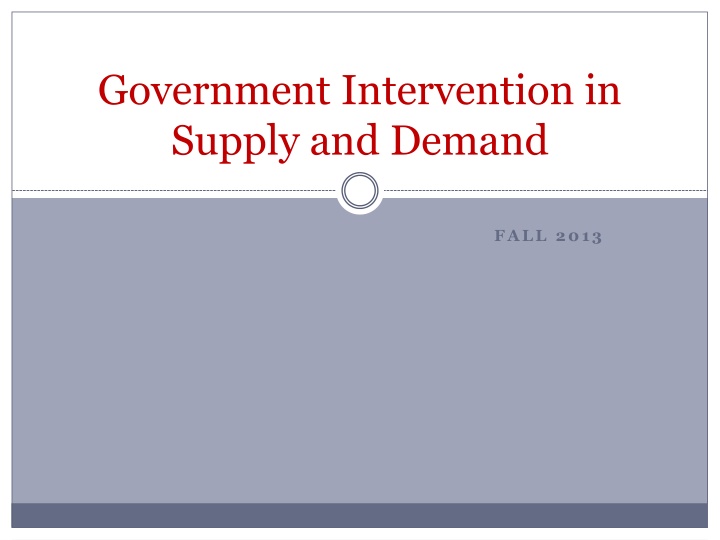
Government Intervention in Supply and Demand
Explore the reasons behind government intervention in supply and demand, including price ceilings and floors, their impacts, and the undesirable consequences according to economists. Learn about price controls, their problems, and why they exist.
Download Presentation

Please find below an Image/Link to download the presentation.
The content on the website is provided AS IS for your information and personal use only. It may not be sold, licensed, or shared on other websites without obtaining consent from the author. If you encounter any issues during the download, it is possible that the publisher has removed the file from their server.
You are allowed to download the files provided on this website for personal or commercial use, subject to the condition that they are used lawfully. All files are the property of their respective owners.
The content on the website is provided AS IS for your information and personal use only. It may not be sold, licensed, or shared on other websites without obtaining consent from the author.
E N D
Presentation Transcript
Government Intervention in Supply and Demand FALL 2013
Why Governments Intervene Well? Why would they? Set maximum prices for some goods and services ( price ceilings ) and minimum prices ( price floors ) for others Why would economists view this as undesirable?
Price Ceilings Generally imposed in crisis situations to counteract rising prices Set BELOW equilibrium price Create a shortage, as there is a gap between the quantity demanded at the new price and the quantity producers are willing to supply
Other Problems of Price Ceilings Inefficient distribution to consumers Not all who need it can get the product, some who could and would pay more get an advantage Wasted resources Time, money, and effort dealing with shortages Inefficiently low quality Because prices are held low, there is no incentive to offer high quality Illegal activity Black market transactions to get around controls 1. 2. 3. 4.
Price Floors Designed to keep prices from falling (for suppliers) Set ABOVE equilibrium price Results in surplus, as there is a gap between the quantity being supplied at the new price and the amount buyers are willing to purchase
Other Problems of Price Floors Inefficiently low quantity Fewer sell than would sell in an uncontrolled market Wasted resources - Governments tend to buy up surpluses (which they destroy or use inefficiently), or pay producers not to produce Inefficiently high quality No incentive to lower prices to compete, so producers offer higher quality than consumers want Illegal activity Transactions occurring below the price floor level 1. 2. 3. 4.
Why Price Controls Exist Interest groups benefit Fear of what might happen without controls Policymakers uneducated in economic theory
Quantity Controls When governments issue a limited number of licenses, they create a limit on supply (quota) Set BELOW equilibrium quantity Prevents market reaching equilibrium, and two separate prices emerge: Supply price price at which producers are willing to supply the limited number Demand price price at which consumers are willing to purchase the limited number
Deadweight Loss Demand price E Supply price Deadweight loss represents the transactions that would have occurred in a market without quantity controls Also, the problem of illegal activity
Government Intervention: Practice #1 Graph a market for cell phones in which the equilibrium price is $200, but the government has set a price ceiling at $100. 2. Label on the graph: Equilibrium price Equilibrium quantity Price ceiling Surplus or shortage 1.
Government Intervention: Practice #2 Graph a market for oil in which the equilibrium price is $2/gal, but the government has set a price floor at $3/gal. 2. Label on the graph: Equilibrium price Equilibrium quantity Price floor Surplus or shortage 1.

